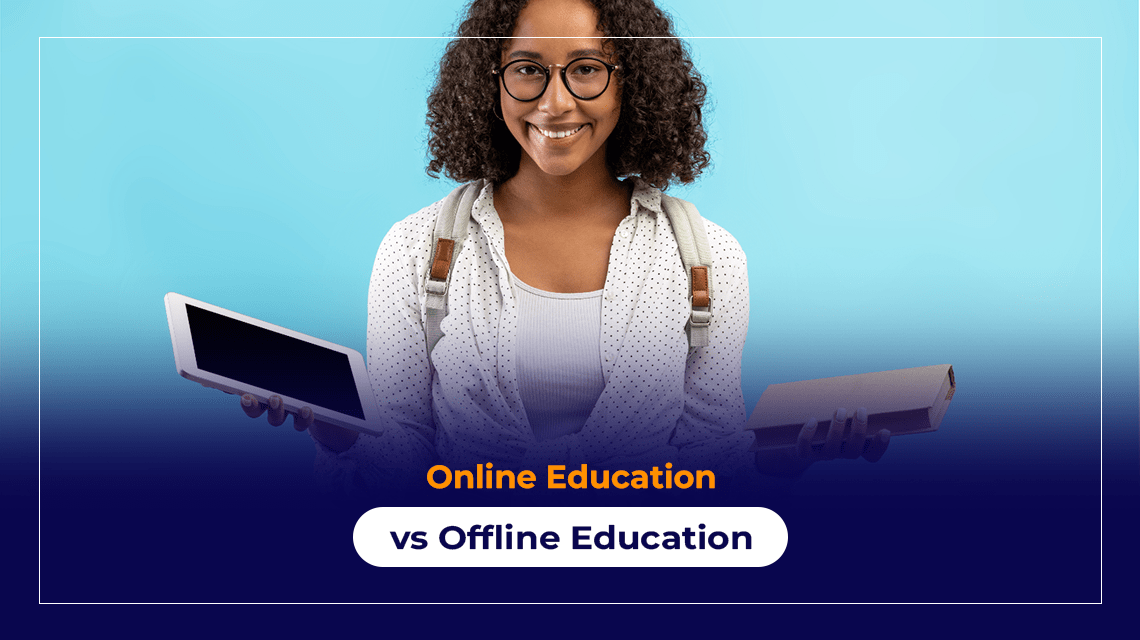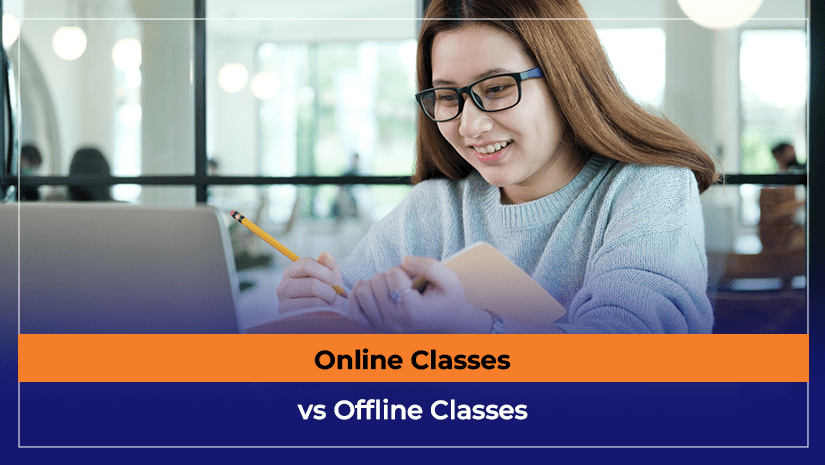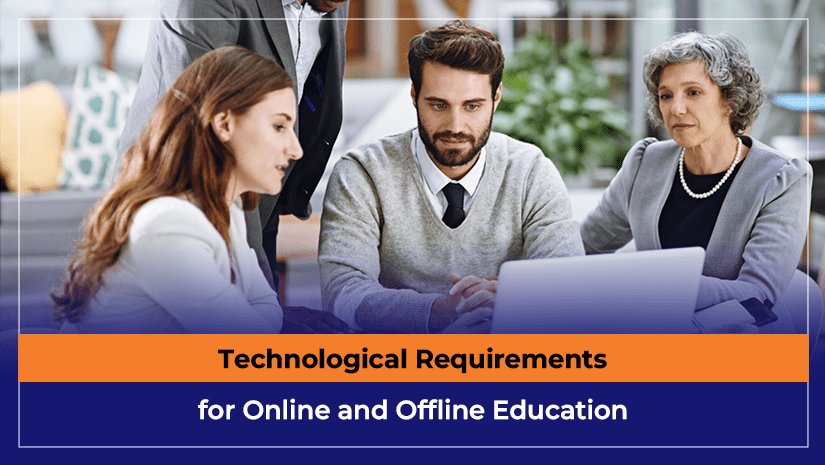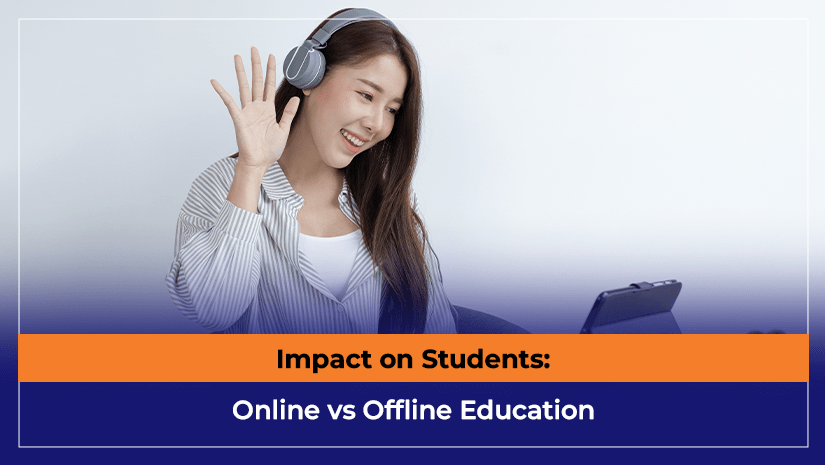
The online education vs offline education debate is hotter than ever. With the rise of technology, online education has become more popular. However, offline education still holds its ground. So, what makes these two forms of learning so different, and which one is better?
Education has taken a fascinating turn on both platforms. Let's explore the key points of online education vs. offline education and much more in this article. By the end, you'll have a clearer idea of the pros and cons of each method.
Online education, also known as e-learning, refers to education through the internet. This way of learning started to grow in the late 20th century with computers and the internet. At first, it was just for sharing course materials, but now it's a full learning method.
Today, online education includes virtual classrooms, webinars, and online courses. It lets students learn from anywhere, making it more convenient. Online education can be very engaging and dynamic with videos and interactive tools.
Offline education, what we know as traditional education, happens in a physical classroom. This method has been around for a long time and involves face-to-face interaction between students and teachers. It's the usual teaching method with lectures, discussions, and hands-on activities.
Over the years, offline education has also used modern tools like projectors and smartboards. However, the main parts of offline education are still the same: direct interaction and practical learning.

When discussing learning environments, we look at where and how students learn. And there comes the difference between online and offline class experiences. For example:
In the debate on online classes vs offline classes, the first thing that comes up is the classrooms. In online classes, students learn in virtual classrooms. They need to log into a website or app to join their class. They can watch videos, participate in discussions, and do assignments all from their computer or tablet.
Offline classes, on the other hand, take place in physical classrooms. Students and teachers meet in person, at a school, or at another educational institution. These classrooms are equipped with desks, boards, and other learning tools.
Another element of the learning environment is flexibility. Online classes have a big advantage in this case. Students can often choose when to watch lectures or do their work, fitting their studies around other things like jobs or family.
Offline classes have a set schedule. Students have to be in class at specific times. This is less flexible but provides a routine that can help with discipline and time management.
Flexibility and accessibility are important when comparing online and offline education. Both have their good and bad points here.
Online education is very accessible. We'll just need a device with internet access. This is great for people who live far from school or have busy schedules. Online courses can be done from anywhere in the world. This lets students learn at their own pace and on their own time.
Flexibility Of Traditional Education
Offline education, while less flexible in where you can learn, offers a different kind of accessibility. Being in a classroom means you can get immediate help from teachers and use things like labs and libraries. It also has a set schedule. That can be good for students who need a routine to do well.
Interaction and communication are crucial components of learning. How students and teachers interact is quite different between online and offline education.
In online education, most interactions happen digitally. This can include emails, discussion boards, and video calls. This method allows flexible communication but can sometimes feel less personal. Teachers might not get to know their students as well. However, online tools can still help with good discussions and feedback.
Offline education offers face-to-face interaction. Students and teachers meet in person, which can help build stronger relationships and improve communication. Immediate feedback and personal attention are easier in this setting. This face-to-face interaction often helps students feel more connected and supported.
Peer interaction is also different. Online, students can connect through forums, group chats, and virtual study groups. These can be very effective, but might not feel the same as sitting next to a classmate and working together.
In offline classes, students interact before, during, and after classes, building social networks and friendships that can make learning more enjoyable and effective.

Online education relies a lot on technology. Students need a good internet connection, a computer or mobile device, and sometimes special software. This can be a problem for those without enough resources or technical skills.
Offline education, while also using technology, needs fewer tools. Basic things like textbooks and notebooks are usually enough. Modern classrooms use digital tools, but offline education is still less dependent on advanced technology.
Here's a simple table summarising the technological needs for online and offline education:
|
Requirement |
Online Education |
Offline Education |
|
Device |
Computer, laptop, tablet, or smartphone |
- |
|
Internet Connection |
Stable internet speed |
- |
|
Software/Applications |
Video conferencing apps, educational software |
- |
|
Multimedia Tools |
Webcam, microphone, headphones |
Projector, smartboard (optional) |
|
Technical Support |
IT support for software and hardware issues |
Maintenance of classroom equipment |
Online education has many benefits that make it a popular choice for many students. To point out some major ones:
Despite its benefits, online education also has some challenges and limitations. Here are a few:
Now, about the advantages of offline education, it has several key benefits. These are particularly beneficial for those who prefer traditional learning.
Even the traditional education system has its drawbacks. One of the major issues is its lesser flexibility. Here are some more limitations to consider:

The impact on students varies. Online education offers flexibility, which can lead to better time management and self-discipline. However, the lack of direct interaction can affect social skills and emotional growth. Staying motivated and focused without structured surroundings can sometimes be hard.
Offline education, with face-to-face interaction, can improve communication skills and social connections. The structured routine helps students stay organised and motivated. However, the rigid schedule might not suit everyone, and some might struggle with the pace of traditional classes.
For teachers, moving from traditional to online education requires change. Online teaching needs new skills, like using digital tools and platforms. Teachers must create engaging online content and find new ways to connect with students. This can be challenging and might need extra training.
Offline education allows teachers to use familiar teaching methods. Face-to-face interaction helps in better understanding student needs and providing immediate support. The traditional setting, however, might limit the use of new teaching tools and methods available in online education.
The future of education will likely mix both online and offline methods. Hybrid models that combine online learning's flexibility with offline classes' interaction are becoming more popular. This balanced approach can offer a complete learning experience.
Technology will continue to shape education. Virtual reality, AI, and modern learning platforms are some examples of how technology can improve both online and offline education. The goal is to create engaging, accessible, and effective learning environments for all students.
When arguing about online education vs offline education, we will find the pros and cons for both. The choice between online and offline education depends on individual needs and preferences. A mix of both might be the best solution, using the strengths of each method.

February 25 2024

February 25 2024

February 25 2024

February 25 2024

 Dr. Shafiq
Dr. Shafiq
 February 25 2024
February 25 2024
 05:40:00
05:40:00
Do you have a career plan in a Senior Care or Supervisory Care position? If so, a Level 3 Diploma will help...
Read more...
 Dr. Shafiq
Dr. Shafiq
 February 25 2024
February 25 2024
 05:43:00
05:43:00
If you are living in the UK or planning to do that, you must know about the education system there. The UK&...
Read more...
 Dr. Shafiq
Dr. Shafiq
 February 25 2024
February 25 2024
 05:50:00
05:50:00
In the recent past, you had to have a four-year bachelor’s degree to start a career. With the rapid c...
Read more...